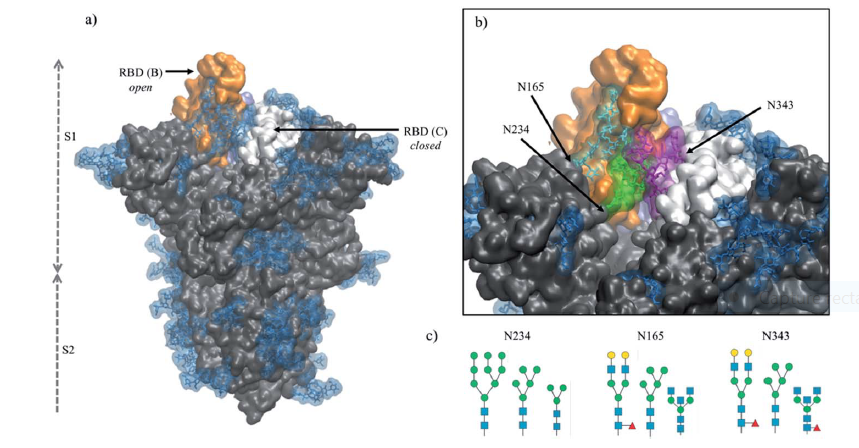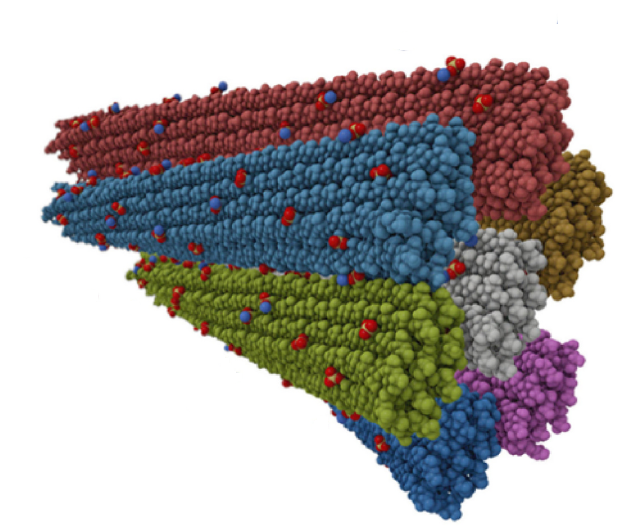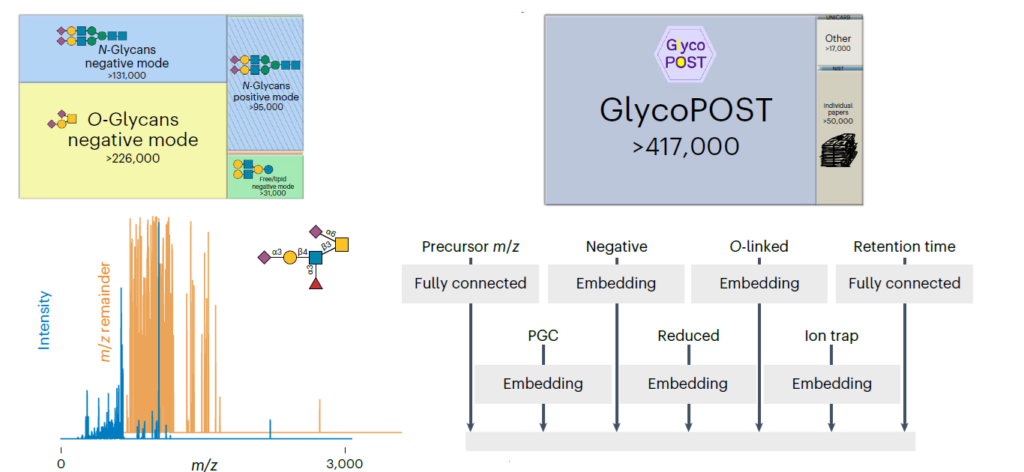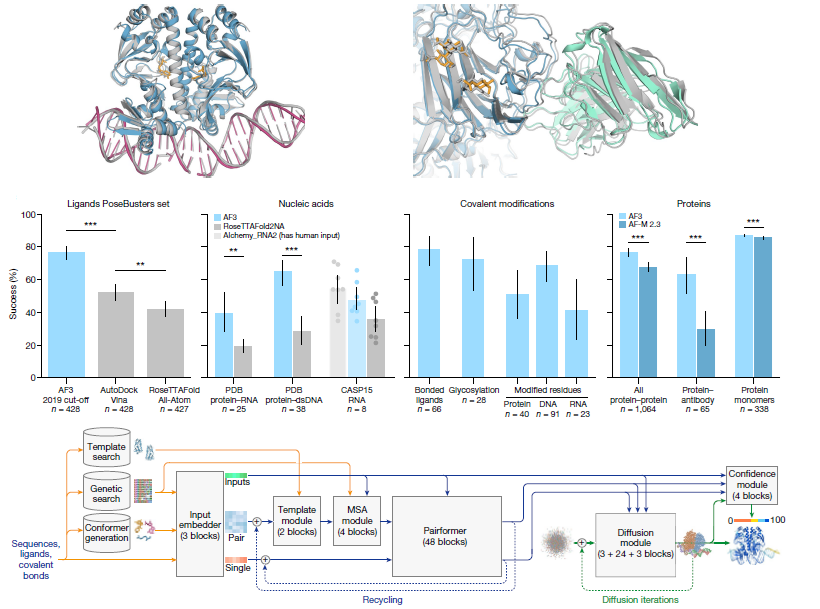The dense glycan shield is an essential feature of the SARS-CoV-2 spike (S) architecture, the key to immune evasion and to the activation of the prefusion conformation. Recent studies indicate that the occupancy and structures of the SARS-CoV-2 S glycans depend not only on the nature of the host cell but also on
the structural stability of the trimer; a point that raises important questions about the relative competence of different glycoforms. Moreover, the functional role of the glycan shield in the SARS-CoV-2 pathogenesis suggests that the evolution of the sites of glycosylation is potentially intertwined with the evolution of the protein sequence to affect optimal activity.

The results from multi-microsecond molecular dynamics simulations indicate that the type of glycosylation at N234, N165 and N343 greatly affects the stability of the receptor-binding domain (RBD) open conformation, and thus its exposure and accessibility. The results suggest that the loss of glycosylation at N370, a newly acquired modification in the SARS-CoV-2 S glycan shield’s topology, may have contributed to increasing the SARS-CoV-2 infectivity as we find that N-glycosylation at N370 stabilizes the closed RBD conformation by binding a specific cleft on the RBD surface. We discuss how the absence of the N370 glycan in the SARS-CoV-2 S frees the RBD glycan-binding cleft, which becomes available to bind cell-surface
glycans, and potentially increases host cell surface localization.



